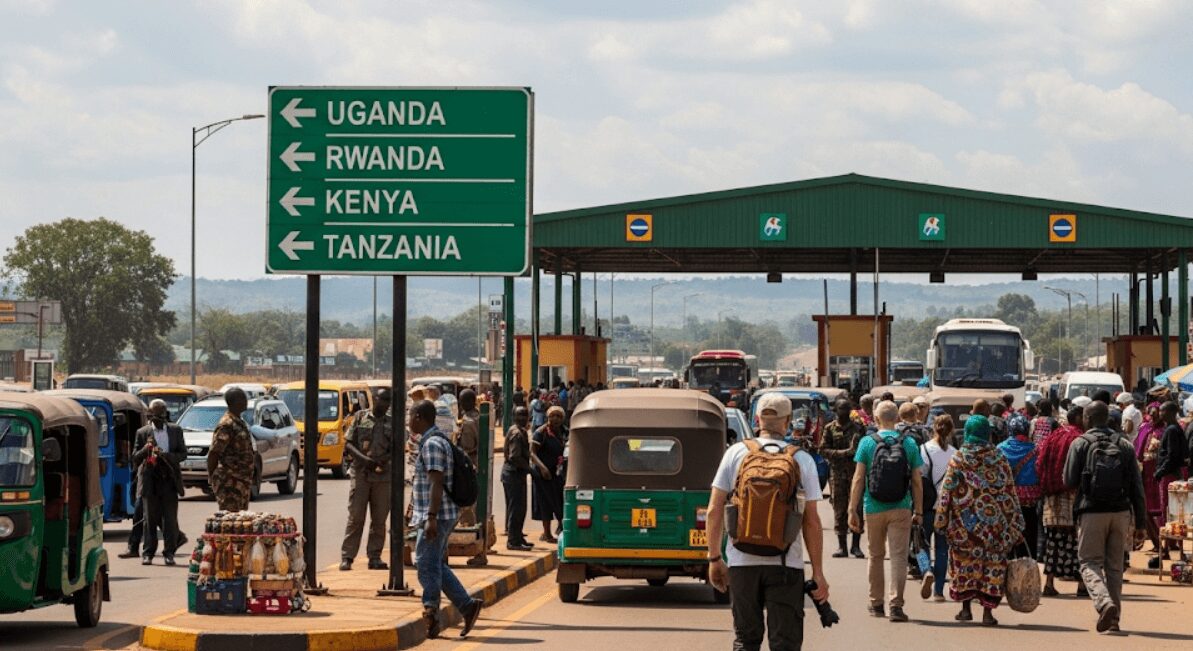East Africa Visa Guide: Uganda, Kenya, Rwanda Multi-Country Passes & Borders | WildHorn Africa | border crossings
When planning a safari across East Africa, the logistics of visas, border crossings, and regional travel passes become as crucial as choosing the right park or lodge. For travellers heading to Uganda, and perhaps venturing on to neighbouring countries like Kenya and Rwanda (or even Tanzania), understanding how these systems work will save time, money and stress. This comprehensive article explains how the visa regimes operate in Uganda and the region, what kinds of multi-country passes exist, how border crossings are managed, and what travellers need to watch out for to ensure a seamless journey.
The Regional Framework: East Africa and the Tourist Visa Initiative
East Africa has long been recognised as one of the most wildlife-rich and diverse regions on the planet. Countries within the East African Community (EAC) such as Uganda, Kenya and Rwanda realised that enabling easier movement across borders would enhance tourism and strengthen the region’s appeal as a multi-destination safari zone. With that in mind, a multi-country tourist visa was introduced, known as the East Africa Tourist Visa (EATV), which allows travellers to enter and move between participating countries on a single permit.
The EATV was designed to simplify travel between Uganda, Kenya and Rwanda, providing multiple entries for tourism purposes within a 90-day period. It reduces the administrative burden of applying for separate visas for each country, making cross-border safari circuits far more appealing and accessible.
However, not all EAC members participate in the same way. While the concept originally aimed to include Tanzania, the country did not fully join the program. This means travellers must plan carefully if their route includes Tanzania or other neighbouring states beyond the three core countries.
Understanding the East Africa Tourist Visa (EATV)
Validity, Entry Conditions and Restrictions
For travellers wishing to visit Uganda, Kenya and Rwanda under one permit, the East Africa Tourist Visa provides a simplified solution. This visa is valid for 90 days from the date of first entry and allows multiple entries among the three countries. The visa must be obtained from the country of first entry, meaning if your safari begins in Uganda, you apply through Uganda’s immigration system.
The visa costs around USD 100 and is non-extendable. It covers tourism activities only — work, study, or residence are not permitted. Travellers are required to hold a passport valid for at least six months upon entry and provide documentation such as itinerary, accommodation details, and a yellow fever vaccination certificate.
Application Process for Uganda
In Uganda, the application for the EATV is made online through the country’s e-visa portal. Once approved, travellers print their visa confirmation or display the digital copy upon entry. The same document remains valid when crossing borders into Kenya or Rwanda, provided travel occurs within the 90-day validity period.
Because each participating country’s immigration system is interconnected for verification purposes, the traveller’s first entry country becomes the visa’s issuing authority. Therefore, ensuring your itinerary begins in the country from which the visa is issued is essential.
Uganda’s Single Country Visa Options and Border Crossings
Uganda’s Standard Visa Options
For travellers focusing solely on Uganda, standard visas apply. Uganda offers single-entry and multiple-entry visas, the former valid for up to 90 days, and the latter for six, twelve, or twenty-four months. Multiple-entry visas are useful for visitors who may leave Uganda and return several times during an extended trip or while conducting regional safaris.
Border Crossing Procedures
Uganda shares land borders with Kenya, Tanzania, Rwanda, South Sudan, and the Democratic Republic of Congo. Major crossing points include Malaba and Busia into Kenya, Gatuna into Rwanda, and Mutukula into Tanzania.
When crossing borders, immigration officials check documentation, including passports, visa validity, and vaccination certificates. For travellers on an East Africa Tourist Visa, the immigration officer confirms that the visa was issued by the first entry country and remains valid within the trip’s time frame.
Travellers should also carry printed copies of itineraries and accommodation bookings. These documents can be useful at checkpoints to verify that travel is strictly for tourism purposes.
Uganda’s Role in Regional Crossings
As the geographic heart of East Africa, Uganda serves as a gateway between the equatorial forest region of Central Africa and the vast savannahs of the East. Many overland safari itineraries pass through Uganda as part of a circuit linking Kenya’s Maasai Mara, Uganda’s Bwindi and Queen Elizabeth National Parks, and Rwanda’s Volcanoes National Park. The visa’s multi-entry nature allows these routes to be explored efficiently without repeated visa costs.
Tanzania and Other Neighbouring Countries
Tanzania’s Separate Visa Policy
Although Tanzania is a member of the East African Community, it is not part of the East Africa Tourist Visa scheme. Travellers visiting Tanzania must apply for a separate visa either online through the Tanzania eVisa system or on arrival, depending on nationality. Costs and validity periods vary.
For travellers including Tanzania in their itinerary alongside Uganda, Kenya, or Rwanda, planning must accommodate both visa systems. Some safari circuits, for instance, combine the Serengeti in Tanzania with Masai Mara in Kenya or Bwindi Impenetrable Forest in Uganda. In these cases, separate visa applications and border formalities are required.
Other Regional Agreements
While discussions about a broader EAC single tourist visa continue, no formal system currently covers all member states (including Burundi and South Sudan). Thus, only Uganda, Kenya, and Rwanda fully participate in the East Africa Tourist Visa. Any travel outside this tri-nation zone requires independent visas.
 Planning a Multi-Country Safari Itinerary
Planning a Multi-Country Safari Itinerary
Choosing the First Entry Country
Because the East Africa Tourist Visa must be obtained from and first used in the issuing country, the entry sequence is vital. Travellers beginning in Uganda must enter Uganda first, not Kenya or Rwanda. Entering another country first would invalidate the visa. This detail is particularly important for those booking flights that may land in Nairobi or Kigali en route to Uganda.
Time Management and Validity
The 90-day validity of the East Africa Tourist Visa begins upon first entry into the issuing country. The period cannot be extended, so itineraries must be designed to fit within that timeframe. Travellers who wish to stay longer than three months may need to apply for separate visas, especially if they intend to base themselves in one country for extended volunteering, research, or business.
Safari Vehicle Crossings
For travellers embarking on overland safaris, vehicles must clear customs at each border post. Tour operators handle most of these logistics, including vehicle import documentation, insurance, and temporary road permits. It is essential that travellers verify these arrangements before departure, as vehicle clearance procedures can vary widely between borders.
Travelling with an experienced operator also minimizes delays, as border crossings can sometimes be lengthy due to customs checks or high traffic volumes.
Border Crossings: Air and Land Logistics
Air Travel Across Borders
Regional air connectivity among Uganda, Kenya, and Rwanda has greatly improved. Flights between Entebbe, Kigali, and Nairobi are frequent, making air transfers a convenient option for travellers on the East Africa Tourist Visa. Air travel simplifies the process since airport immigration officers are well-versed in handling EATV passengers.
When flying, travellers should ensure that their passport is stamped upon exit and entry at each airport, maintaining consistency in travel records to avoid complications.
Land Travel and Overland Crossings
Overland travel is ideal for travellers seeking scenic routes and close encounters with local life. Popular border crossings include:
-
Busia or Malaba (Uganda–Kenya) for access between Kampala and Nairobi.
-
Katuna or Cyanika (Uganda–Rwanda) for travellers moving between Bwindi and Volcanoes National Parks.
-
Mutukula (Uganda–Tanzania) for southern routes.
While these crossings are safe and well-maintained, it is advisable to travel during daylight and to carry sufficient local currency for border fees or tips for services such as baggage handling.
Health and Document Requirements
Health regulations across East Africa are consistent. Yellow fever vaccination certificates are mandatory for travellers entering Uganda, Kenya, or Rwanda from regions where yellow fever transmission occurs. Carrying the International Certificate of Vaccination (the yellow booklet) avoids complications at entry points.
All travellers must also have:
-
Passports valid for at least six months beyond the intended departure date.
-
At least two blank pages for stamps.
-
Proof of accommodation and onward or return travel.
Insurance covering medical evacuation is highly recommended, particularly for those engaging in wildlife or mountain activities.
Border Crossing Costs and Practical Considerations
While the visa fee covers entry permissions, certain border fees may still apply, especially for travellers driving private vehicles or for customs clearances of safari equipment. These include temporary vehicle permits, third-party insurance, and, in some cases, small community road levies.
Travellers using the East Africa Tourist Visa should note that leaving the tri-nation region automatically invalidates the visa. For instance, if a traveller enters Tanzania, Burundi, or South Sudan, re-entry into Uganda, Kenya, or Rwanda would require a new visa.
Careful sequencing and consultation with travel specialists prevent such mishaps, ensuring seamless transitions between countries.
Recent Developments in East African Visa Policy
Visa policies in East Africa continue to evolve. Kenya has recently transitioned to an Electronic Travel Authorization (eTA) system, which streamlines entry for many nationalities. Uganda’s e-visa system has improved processing times, and Rwanda continues to promote the East Africa Tourist Visa as part of its tourism integration strategy.
Efforts are underway to expand the EATV’s scope to include more East African Community members. Once fully harmonised, this could create one of the world’s most accessible tourism regions, allowing travellers to experience everything from Uganda’s gorillas to Kenya’s savannahs and Rwanda’s volcanoes on a single permit.
Until then, awareness of each country’s unique rules remains essential for smooth travel planning.
Sample Itinerary Using the East Africa Tourist Visa
Imagine a traveller beginning their journey in Uganda — landing at Entebbe International Airport. After securing the East Africa Tourist Visa online prior to arrival, they spend the first ten days exploring Kibale Forest, Queen Elizabeth National Park, and Bwindi Impenetrable Forest.
From there, they cross into Rwanda through the Katuna border post to visit Volcanoes National Park and Kigali’s cultural attractions. Two weeks later, they fly from Kigali to Nairobi to conclude their journey with a safari in Maasai Mara before returning home.
Throughout the 90 days, the same visa remains valid across all three countries, and border procedures are straightforward since the visa was issued by Uganda (the first country of entry). This flexibility underscores the value of the East Africa Tourist Visa for travellers seeking multi-country experiences in one seamless journey.
The Broader Importance of Multi-Country Travel in East Africa
The introduction of the East Africa Tourist Visa reflects the region’s growing cooperation and the recognition that modern travellers seek regional experiences rather than single-country holidays. By linking destinations like Bwindi, Serengeti, Masai Mara, and Volcanoes National Park, East Africa positions itself as a unified eco-tourism corridor.
Uganda plays a pivotal role in this framework. Its central location makes it both a destination and a transit hub, connecting Central Africa’s rainforests with East Africa’s grasslands. For travellers, this translates into endless possibilities — gorilla trekking, savannah game drives, river cruises, mountain hikes, and cultural encounters across multiple nations with shared natural and cultural heritage.
Understanding the visa and border frameworks that support these experiences ensures that travellers can fully embrace the adventure without interruption or uncertainty.
The Call to Explore East Africa Seamlessly
The beauty of East Africa lies not only in its wildlife and landscapes but also in its spirit of openness and collaboration. The East Africa Tourist Visa symbolises that spirit — an invitation to explore beyond borders, to connect cultures, and to experience a region bound together by diversity and shared purpose.
Whether trekking gorillas in Uganda, cruising the Nile, watching the Great Migration in Kenya, or wandering Kigali’s clean streets, the region offers an interconnected experience that few places on earth can match.
And when you are ready to embark on your own East African adventure, let it be guided by expertise, care, and authenticity. Choose to book your Africa tours and safaris with WildHorn Africa, where cross-border itineraries are handled with precision, and every detail — from visa planning to cultural experiences — is thoughtfully designed. With WildHorn Africa, your journey through East Africa becomes not just a trip, but a passage through a world of natural beauty, cultural depth, and boundless adventure.





 WildHorn Africa – Authentic and unforgettable tours across Africa, guided by local experts who know the land, wildlife, and culture best.
WildHorn Africa – Authentic and unforgettable tours across Africa, guided by local experts who know the land, wildlife, and culture best.


